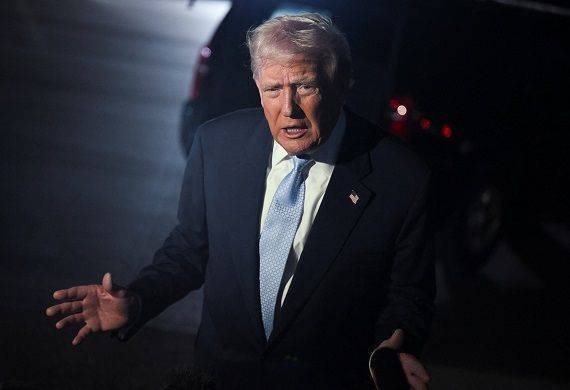Navigating Mergers and Acquisitions for Strategic Growth
By Per Stenius, Chairman and CEO, Reddal Group

In an exclusive conversation with Global Leaders Insights, Per Stenius, Chairman and CEO of Reddal Group, shares how M&A is shifting from a pursuit of scale to a disciplined engine of strategic transformation. He highlights the need for sharper target selection, deeper diligence, and culturally aligned integration, especially as uncertainty, technology disruption and regulatory complexity rise. Stenius emphasises that value now comes from clarity of purpose, digital-ready operating models, and integration excellence rather than headline dealmaking. His perspective underscores a new reality: the winners in modern M&A are those who turn complexity into innovation, resilience and long-term competitive advantage.
What key factors drive your decision when identifying ideal M&A targets for growth?
Ideal growth targets sit in your strategic sweet spots, offer distinctive value under your ownership, are financially sound at a disciplined price, carry manageable risks, and can be integrated with resources you actually have.
Strategic fit can be assessed in three layers:
• Is the company in an attractive business — growing, profitable categories, strong value-chain position and core geographies?
• Can it drive new growth for your portfolio via access to its channels, geographies or customer segments?
• Can you drive growth for the target’s portfolio using your brands, footprint, or capabilities?
Targets that do not sit in priority expansion themes and do not strengthen strategic position are distractions, regardless of how cheap they appear.
Ability to create distinctive value. You also need to be the best owner of the asset. This means:
• Clear, quantified cost synergies that you can realistically capture.
• A good fit with your operating model and culture so integration does not destroy what makes the target successful.
• New skills you can retain — local knowledge, relationships, technical or category expertise.
If your synergy logic looks like every other bidder’s, you are unlikely to win at a value-creating price.
Financial feasibility and risk. Key questions:
• Is the acquisition feasible given leverage, rating, and liquidity boundaries?
• Are you paying only for attractive assets, or must you divest non-core parts?
• Are risks — legal, financial, market, internal — tolerable?
• Can you acquire at a competitive price, and will an auction push the price beyond value creation?
Executability. A funnel filters targets through strategy fit, value-creation potential, financing boundaries, availability, and finally negotiation and diligence. A prioritization matrix then maps “ability to fill strategic gaps” against “executability” to decide which targets deserve full valuation work. Clear processes, tools and experienced staff (internal or external) are essential. Serial acquirers need in-house competence to maintain momentum.
What major challenges arise during post-merger integration of culture and systems?
Most deals fail not because strategy is wrong but because people and systems integration is mishandled. Key challenges revolve around culture, operating model, technology, and governance.
Cultural alignment and leadership. Integration means reconciling norms on hierarchy, decision-making, risk appetite and transparency. Leadership roles and decision rights must be clarified, incompatible behaviors reset, and key people with market knowledge retained. In many Asian markets, relationship capital is crucial; rapid restructuring can destroy the logic of the deal. Pace therefore varies — slower in Asia, faster in Western markets.
Operating model and systems integration. Integration is more than IT. It spans structure, people and culture, processes and systems, metrics and rewards, and IT tools and data. Challenges include:
• Deciding which processes to standardize and which to keep local
• Sequencing system migrations without disrupting operations
• Managing near-term negative synergies before efficiencies materialize
Governance and program management. Integration is a multi-year programme requiring:
• A steering group to own direction and trade-offs
• A PMO to coordinate workstreams and track milestones
• Well-scoped workstreams across commercial, technology/R&D and support functions
Without this, integration stalls, decisions fall into silos, and customer issues get neglected.
Pace and sequencing. A phased plan is essential: 30–90-day basics and quick wins, followed by momentum across streams, and later operating-model design and system migrations. Overloading the organization early is a common failure. In some regions, pace must be slower to protect relationship capital.
Also Read: Storytelling in B2B Tech
How do you assess and minimize risks before finalizing a merger or acquisition deal?
Risk management is about making risk explicit, pricing it correctly, and structuring the transaction to contain it.
Mapping the risk landscape. A structured map covers:
• Information quality and accounting transparency
• Related-party transactions and ownership structures
• Tax exposures and contingent liabilities
• Governance, potential misconduct or criminal behaviour
• Legal, IP and regulatory issues
• Local market and cultural risks, including reliance on informal networks
• Weak internal controls and systems
• Key employee retention
Risks are addressed through: “map and assess”, “cover and prevent”, and “address and remedy”.
Due diligence refines the thesis. Diligence must be anchored in value drivers and risks. A disciplined approach:
- Starts with standalone valuation;
- Quantifies performance improvements and synergies needed to justify the premium;
- Uses diligence to refine these assumptions, not justify an already agreed price.
Guidance includes reducing headline synergies, applying benchmarks, being realistic on timing, including working-capital and integration costs, and modelling revenue dis-synergies like customer loss.
Deal structure to manage risk. Structure can contain risk through:
• Asset deals to ring-fence liabilities
• Earn-outs and deferred consideration
• Escrow accounts, warranties, indemnities and covenants
• Transitional service agreements to ensure continuity in carve-outs
Pre-integration planning as mitigation. Some risks can only be addressed by preparing integration early: defining value drivers, scope, governance and schedules before signing; and designing a 90-day plan to tackle critical issues immediately after closing.
How can M&A fuel innovation, market expansion, and long-term value creation?
M&A helps rewire or restructure a business rather than simply buy revenue. A value ladder moves from growth and innovation to market penetration and operational excellence.
Growth and innovation. Acquisition can:
• Provide access to new channels and geographies
• Extend your product or service portfolio
• Leverage stronger brands or bring your brand into new segments
• Increase R&D capacity and innovation pipelines
• Provide access to rapidly developing technologies
In today’s environment, this often means AI, software, digital infrastructure, energy transition assets and data-centre capabilities. Technology, media and telecom sectors are particularly active; energy and materials sectors focus on renewables, critical minerals and grid modernization.
Market expansion and revenue preservation. M&A deepens penetration in existing markets via bundled offerings and cross-selling and improves customer retention with comprehensive solutions. Platform building — adding adjacencies around core capabilities — is especially powerful.
Operational excellence and organizational performance. Value is also created by:
• Eliminating excess overhead across logistics, IT, back office
• Rationalizing facilities and inventories
• Upgrading talent and governance
Programmatic acquirers executing a series of mid-sized, themed deals often outperform peers on shareholder returns.
What advice would you share with leaders pursuing M&A in uncertain market conditions?
In evolving conditions, five areas of advice stand out.
a. Lean into strategic clarity, not opportunism. Anchor M&A in long-term strategy, not fire-sale bargains. Deals should align with ambitions such as digital transformation, business-model shifts or portfolio rebalancing. A “portfolio of bets” — a mix of strategic targets, tuck-ins and carve-outs — helps manage risk. Leaders should revisit questions on where to double down, which technologies to build or buy and which regions to expand. Parallel assessments of divestments are part of prudent portfolio strategy.
b. Be rigorous on risk — deepen diligence and use technology. Uncertain conditions amplify macro, geopolitical, regulatory and cultural risk. Use scenario planning and stress-testing for revenue, cost, capital structure and synergy assumptions. Focus on non-financial aspects such as culture, ESG risk and supply-chain resilience. Use data, analytics and AI for faster, more accurate target screening and valuation; virtual data rooms and automation enhance diligence.
c. Prepare for regulatory and geopolitical complexity. Cross-border deals face heightened scrutiny. Leaders must map regulatory challenges early, use local advisors, and plan for delays. Many companies now favour regional deals to reduce cross-border risk and avoid national-security and antitrust hurdles.
d. Maintain financial flexibility. Preserve liquidity; dry powder is a hedge in volatile markets. Use phased or earn-out structures tied to performance to maintain optionality. Stay disciplined on valuation; high uncertainty does not justify high multiples.
e. Treat integration as a core value lever. In volatile markets, value often comes from integration excellence. Invest in integration planning before close; build playbooks, teams and governance for technology, culture, operations and communication. Talent is fragile in uncertain times — retention incentives and cultural alignment are critical. Clear processes and experienced staff drive integration success.
Also Read: The Roll-Up-My-Sleeves Leader: Driving Hig-Performance B2B Teams
How do you foresee M&A evolving amid tech disruption and changing global dynamics?
M&A is set to evolve not just in volume but in purpose and execution. Five trends stand out.
a. AI as a core M&A driver; digital-first integration. Companies acquire for AI talent, data and IP. AI will increasingly shape deal sourcing, valuation and diligence. Post-merger integration will depend on digital infrastructure — data integration, cloud, real-time dashboards and AI-driven insights. Talent integration will prioritize data scientists, engineers and digital leaders. Cultural integration will extend to aligning “data cultures.”
b. Smart consolidation with regulatory and national-security themes. Companies will continue spinning off non-core assets to fund tech-enabled growth, increasing carve-outs and divestitures. ESG priorities will push acquirers toward sustainability, climate-tech and clean-energy assets. Regulators will intensify scrutiny of deals involving AI, semiconductors and data infrastructure.
c. Rise of regionalization and cross-border realignment. Geopolitical fragmentation drives companies toward deals within “friendly” blocs. Capital may flow to markets with technological edge or favourable policies, such as the U.S., India or the Middle East. Regional deals reduce regulatory friction and geopolitical risk.
d. Larger deals return, with selective mid-market activity. Mega-deals are rising even amid uncertainty. Mid-market volumes may remain pressured if financing costs stay high. Private equity, with pent-up capital, is poised to pursue undervalued assets, transform them, and potentially re-list them.
e. M&A as a transformation lever. M&A will increasingly be used to reinvent business models and rebuild portfolios. Companies will use deals to build digital ecosystems combining software, data, cloud and channels into integrated platforms. Recent examples include Salesforce acquiring Informatica to integrate data management into its AI and data platform.
.jpg)

